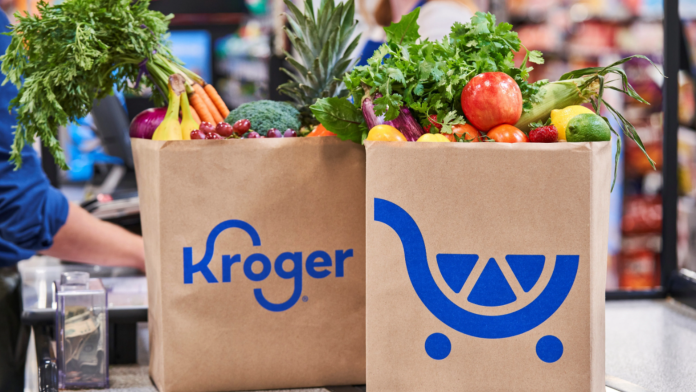On Thursday, Kroger revised down its yearly sales projection, citing the impact of easing food and grocery prices amid a period of subdued consumer demand as individuals exercise caution in their spending habits.
Currently, fresh food items are experiencing a decline in prices, entering a disinflationary phase, while packaged food items are reaching their maximum limits for price increases. This situation is curbing some of the sales advantages that food retailers had previously enjoyed over the past year.
Consumers are displaying a growing inclination towards thriftiness, opting for more affordable alternatives even when it comes to grocery shopping.
“Although inflation is decelerating, customers are still adjusting to the impacts from eight consecutive quarters of broad and significant inflation,” CEO Rodney McMullen said on a post-earnings call.
In an effort to stimulate demand, Kroger has intensified promotional activities. Notably, its in-store presentations featuring everyday staples at low prices have attracted a greater number of budget-conscious customers, leading to an increase in store visits.
While that has helped improve unit volumes, growth rates have not yet matched the inflation decline and “have not improved at the pace we would have expected”, CFO Gary Millerchip said.
Nevertheless, by exercising strict control over expenses and experiencing heightened demand for higher-margin private-label items, Kroger exceeded market expectations for third-quarter profit. As a result, its shares saw a 2% increase in morning trade.
Additionally, Kroger raised the lower boundary of its annual per-share adjusted earnings range to fall between $4.50 and $4.60, surpassing LSEG estimates, which had a midpoint of $4.53.
The company also announced that it had “certified substantial compliance” with the Federal Trade Commission’s request for additional information regarding its nearly $25 billion deal with the smaller rival, Albertsons.
Kroger has revised its outlook for fiscal 2023 identical sales, excluding fuel, anticipating growth in the range of 0.6% to 1%, a decrease from its previous forecast situated at the lower end of a 1% to 2% increase.
“It was a very straightforward report, very much in-line … Of course, you’d like to see a little bit better strength, but it totally makes sense (given the disinflation in the environment),” said Telsey Advisory Group analyst Joseph Feldman.





